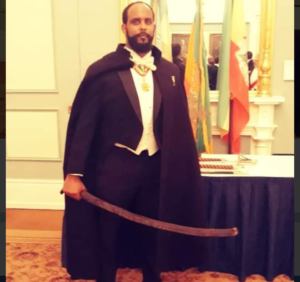Analysis: On the Nature of Ethiopia’s Sociopolitical Challenges and their Context.
Understanding the Nature of Historical Ethiopia [for Context
Part I
It is impossible to understand Ethiopia’s current politics and challenges without analyzing the nature of historical Ethiopia. Ethiopia is one of the oldest existing states on the globe, and one that competed with the Empires of Rome, Persia, and China in its heyday in antiquity. It was also a veritable African Cushito-Semitic Kingdom of the highest prestige that, in the medieval and renaissance periods, had embassies in Europe and maintained alliances with the most powerful Kingdoms all throughout the world. In the modern era, Ethiopia, headed by Emperor Menelik II, was one of the only countries in the world that successfully resisted racialist European colonialism, and fathered, along with prominent actors of African countries, the pan-Africanist struggle under the leadership of Emperor Haile Selassie I of Ethiopia. The internal political arrangement of Ethiopia during those times was unique and one that was initially philosophized by Ethiopian masters of governance, law, and all relevant fields of knowledge. Ethiopia was never an ethnic unitarist state, as anti-Ethiopian ideologues would belligerently affirm, but one that had a provincial system where provinces representing distinct Ethiopian regions, traditions, and ethnic groups had their own provincial ruling Princes or Kings of diverse religious and ethnic backgrounds known as Mesafint or Negestat, borne of the distinct regional people they represented, each governing their province without the necessary intervention of the King of Kings.
The Shift to Far-Leftist Identity Politics
The mentality of anti-Ethiopian rebel groups, such as the TPLF and the OLF/A, regards historical Ethiopia with dire contempt and, against all historical evidence, portrays the 3,000-year-old state as fictional in order to conveniently dismiss the very premise of its existence to draw legitimacy in pushing a secessionist agenda, and at other times, as an Amhara Empire in which “nations and nationalities” (an ethnopolitical parlance to refer to the various ethnic groups of Ethiopia) have been imprisoned and enslaved for centuries. It falsely portrays Ethiopia as an ethnic unitarist state in which Ethiopia’s ethnicities were forcibly deprived of liberty to express their ethnic identities and where they were forced to assimilate to become Amharas at the cost of their own values and traditions. This mentality was best adopted by the insertion of Marxist-Leninist “oppressor and oppressed” identity politics. Personalities such as Walelign Mekonnen, a Marxist activist and militant who died while undertaking a terrorist attack, with the assistance of foreign actors, inspired the ideology of the Derg and the TPLF which materialized and resulted in the violent overthrow of Ethiopia’s Monarchy and the installment of communism and far-leftist politics.
Ethnic Politics and a Confederate-like Ethnic Constitution
After the fall of the communist Derg regime and the TPLF’s arrival to power, a new ethnic Constitution was designed and initiated. This new Constitution, symbolically represented by the five-pointed star at the center of the Ethiopian flag, was a literal declaration of the dissolution of the old Ethiopia, and the establishment of a new Ethiopia with newly and arbitrarily founded ethnic states acting as “self-determining” confederacies which had the right to secede per article 39 of the Constitution. As soon as this Constitution took effect, the diverse ethnic groups of Ethiopia lost their ownership of country, finding themselves in the ethnic statal territories of any said ethnic region. The Amhara were especially affected as, per the numeral grandness of their population, they were in the millions living outside of the established Amhara regional state. This resulted in the ousting, mass displacement, and ethnic cleansing of Amharas from every newly founded non-Amhara ethnic state. Amharas have been a point of target ever since, and the Amhara resistance and struggle against ethnic cleansing was birthed with the leadership of the late Professor Asrat Woldeyes who immediately understood the dangers and sought to devise a solution for the protection of Amharas in Ethiopia. It is also evident that the TPLF, which described itself as an anti-Amhara organization, designed the ethnic Constitution with the help of anti-Ethiopian collaborators to weaken Ethiopia and keep it in perennial internal conflicts with the use of ethnic and religious vulnerabilities, and disempowering the Amhara by reducing them to ethnic minorities living in major Ethnic regional states without political representation.
Part II, to be continued.
Ethiopian Royal Congress (ERC)
የኢትዮጵያ ዘውዳዊ ጉባኤ

